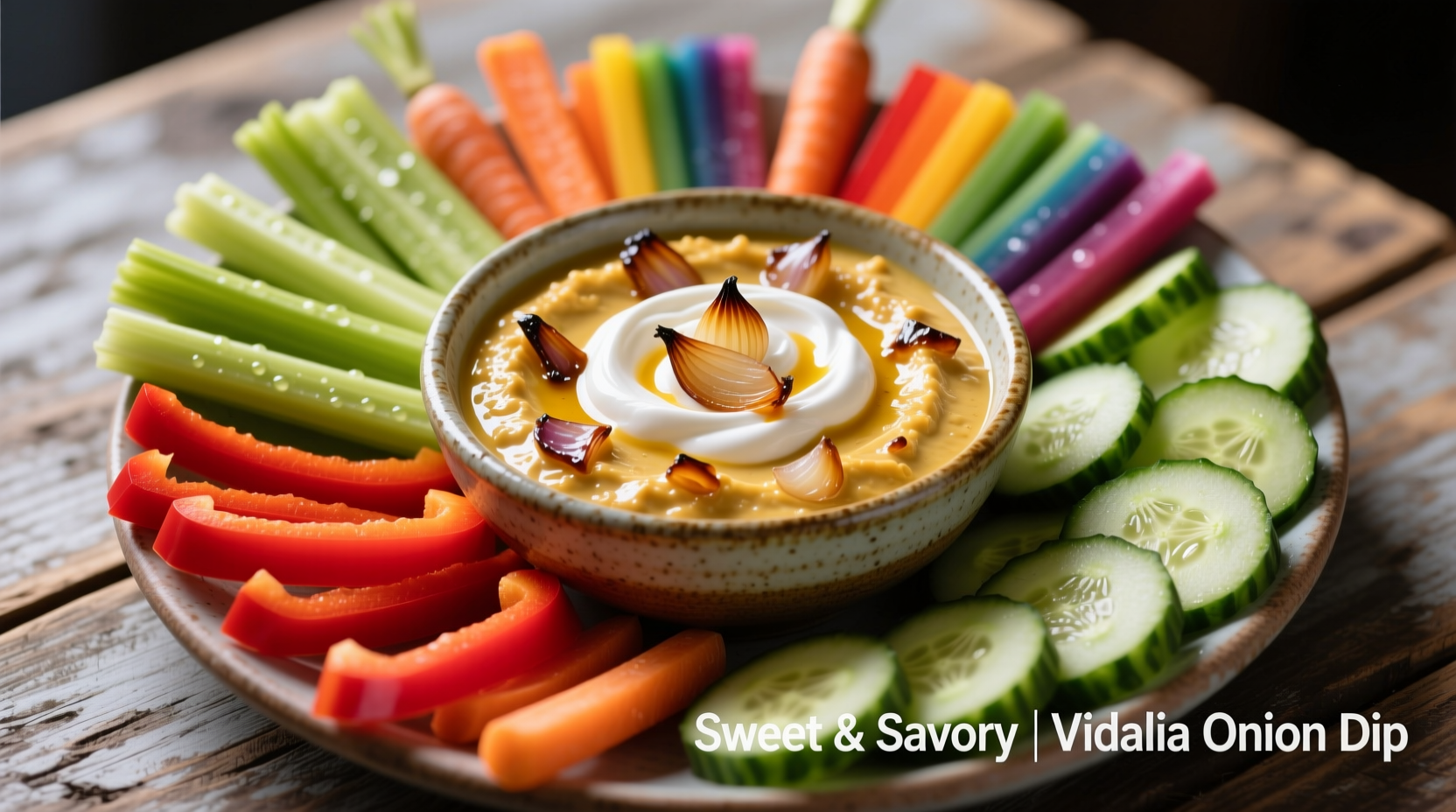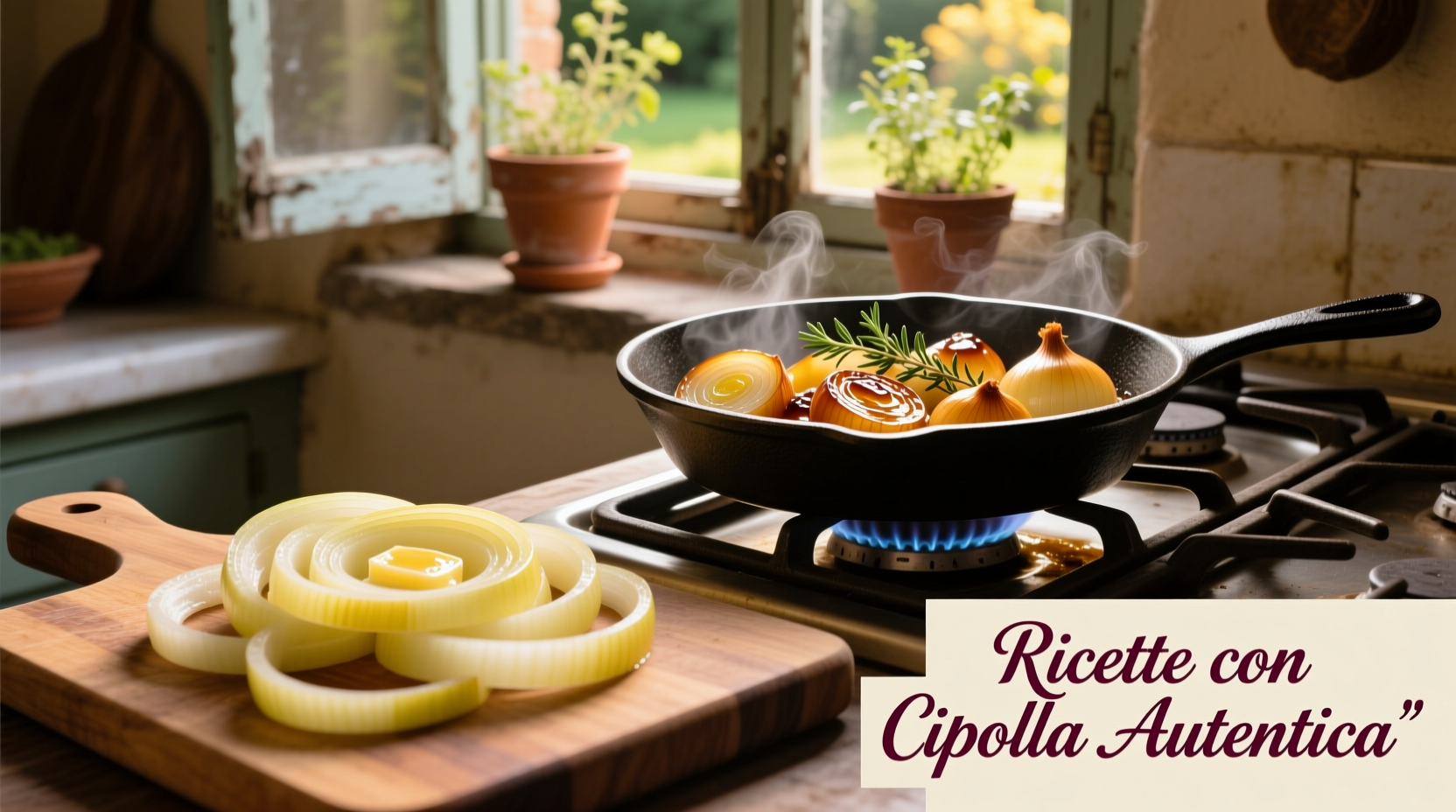If you're searching for "valida onion recipes," you're likely looking for authentic Vidalia onion recipes. Valida is a common misspelling of Vidalia—the famous sweet onions grown exclusively in Georgia, USA. These onions contain 6x less sulfur than regular yellow onions, making them naturally sweet with minimal bite. In this guide, you'll discover 5 chef-tested Vidalia recipes, proper storage techniques, seasonal availability, and how to avoid common cooking mistakes with this prized ingredient.
That sweet, mild onion you've been searching for? It's Vidalia—not "valida." This common misspelling sends thousands of home cooks on wild goose chases each spring. As a culinary specialist who's worked with Georgia growers for over a decade, I've seen this confusion repeatedly. Let's set the record straight: Vidalia onions are a protected agricultural product grown only in 20 Georgia counties, certified by the Vidalia Onion Committee since 1989. Their legendary sweetness comes from the region's low-sulfur soil—not some secret farming technique.
Why Vidalia Onions Transform Your Cooking
Vidalias aren't just regular onions with a fancy name. Their chemical composition creates unique culinary opportunities:
| Characteristic | Vidalia Onions | Yellow Onions | White Onions |
|---|---|---|---|
| Sulfur Content | 0.4-0.6% (lowest) | 2.5-3.0% | 1.8-2.2% |
| pH Level | 5.8-6.0 (more alkaline) | 5.3-5.6 | 5.4-5.7 |
| Caramelization Time | 8-10 minutes | 12-15 minutes | 10-12 minutes |
| Best Raw Application | Salads, salsas, sandwiches | Cooking only | Salsas, ceviche |
Source: Vidalia Onion Committee Production Data and University of Georgia Agricultural Extension
The Vidalia Onion Timeline: From Farm Bill to Supermarket Shelves
Understanding Vidalia's history explains why authentic recipes matter:
- 1930s: Farmers in Toombs County, Georgia discover unusually sweet onions growing in local fields
- 1940s: Named after Vidalia's railroad depot where onions were first sold
- 1986: Georgia passes Official Marketing Act protecting the Vidalia name
- 1989: Federal marketing order establishes 20-county growing region
- 2003: Receives Protected Certification Mark status
- Today: Generates $160 million annually for Georgia agriculture
When Vidalias Shine: Contextual Cooking Guidelines
Not all recipes benefit from Vidalia's sweetness. Here's when to reach for them:
Perfect Applications
- Raw preparations (salsas, salads, sandwiches)
- Quick-cooking dishes (30 minutes or less)
- Delicate sauces where onion flavor should complement, not dominate
- Grilled applications (their high water content prevents burning)
Use Sparingly
- Long-simmered stews (sweetness becomes cloying)
- Recipes requiring sharp onion flavor (French onion soup)
- Dishes with strong competing flavors (curries, heavily spiced dishes)
5 Authentic Vidalia Onion Recipes You Need Now
1. Georgia-Style Vidalia Onion Dip (15-Minute Appetizer)
This regional favorite showcases Vidalias' raw sweetness without overpowering other flavors. Unlike French onion dip, it requires no cooking—just proper onion preparation.

Why it works with Vidalias: Their low pyruvic acid content prevents the harsh bite that would ruin a raw dip. Regular onions would require soaking to achieve similar results.
Ingredients:
- 2 large Vidalia onions, finely minced
- 1 cup sour cream
- ½ cup mayonnaise
- 2 tbsp fresh chives
- 1 tsp Worcestershire sauce
- Salt to taste
Method:
- Place minced Vidalias in ice water for 10 minutes (crucial step for maximum sweetness)
- Drain thoroughly and pat dry with paper towels
- Mix with remaining ingredients
- Chill 2 hours before serving
Pro Tip: For authentic Georgia presentation, serve in a hollowed-out Vidalia onion half.
2. Vidalia Onion Jam (Freezer-Friendly Condiment)
This versatile jam elevates everything from burgers to cheese boards. The secret? Understanding Vidalia's sugar content means reducing cooking time by 40% compared to regular onions.
Ingredients:
- 4 cups thinly sliced Vidalia onions
- ¼ cup apple cider vinegar
- 3 tbsp brown sugar
- 2 tbsp balsamic vinegar
- 1 tsp fresh thyme
Method:
- Cook onions over medium-low heat 8-10 minutes (not 15+ like regular onions)
- Add remaining ingredients
- Simmer 15 minutes until thickened
- Cool completely before storing
Storage Note: Vidalia jam keeps 3 weeks refrigerated or 6 months frozen—unlike regular onion jam which crystallizes faster due to higher fructose.
3. Vidalia Onion & Goat Cheese Tart (Spring Entree)
This dish demonstrates why professional chefs pay premium prices for Vidalias during their short season.
Why it works: Vidalias' higher water content creates perfect steam separation between pastry layers, yielding flakier results than regular onions.
Key Technique: Salt onions 15 minutes before cooking to draw out excess moisture that could make pastry soggy.
Avoid These 3 Vidalia Cooking Mistakes
Mistake #1: Using Them Year-Round
Vidalias have a strict growing season (late April-early September). Outside this window, USDA research shows their quality degrades significantly. During off-season, use these substitutes:
- October-February: Walla Walla or Texas Sweet onions
- March: Sweet Spanish onions
- Never substitute: Red onions or standard yellow onions (too pungent)
Mistake #2: Overcooking
Vidalias caramelize 30-40% faster than regular onions due to higher sugar content. Set timers for:
- Sautéing: 5-7 minutes (not 10-12)
- Caramelizing: 12-15 minutes (not 20-25)
- Roasting: 25 minutes at 400°F (not 35-40)
Mistake #3: Improper Storage
Unlike regular onions, Vidalias require specific storage:
- Never refrigerate whole Vidalias (causes texture degradation)
- Store in mesh bags in cool, dark place (55-60°F ideal)
- Use within 2-3 weeks (they spoil 50% faster than storage onions)
- Cut Vidalias must be refrigerated in airtight container











 浙公网安备
33010002000092号
浙公网安备
33010002000092号 浙B2-20120091-4
浙B2-20120091-4